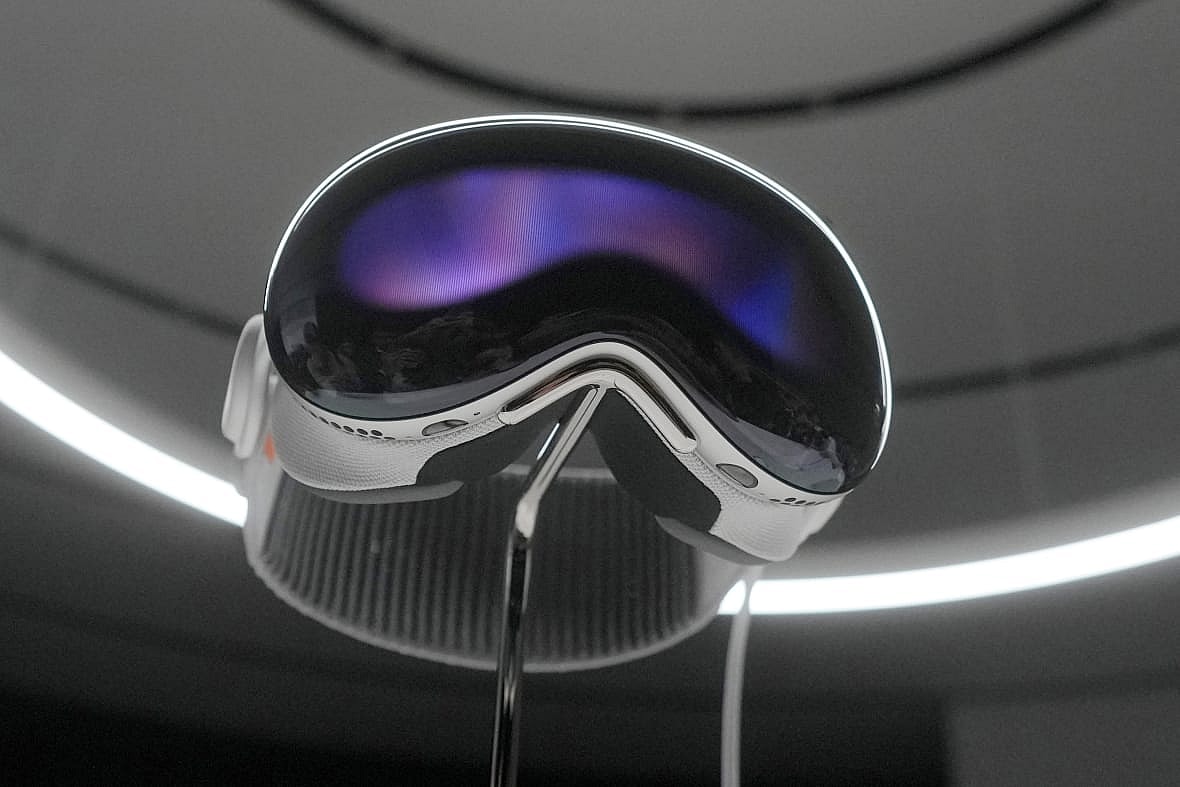CUPERTINO, Calif. (AP) — Reporters are a skeptical bunch, so it was unusual to hear so many of them raving about their firsthand experience with Apple’s next Big Thing: the high-priced headset called Vision Pro, a device infused with totally virtual reality as well as augmented reality that projects digital images on top of real-world settings.
But after wearing the Vision Pro during a half-hour demonstration meticulously orchestrated by Apple, I joined the ranks of those blown away by all the impressive technology Apple has packed into the goggles-like headset. Still, that excitement was muted by a disquieting sense of having just passed through a gateway that eventually will lead society down another avenue of digital isolation.
The potential upsides
But first the good stuff: Vision Pro is a highly sophisticated device that is fairly easy to set up and incredibly intuitive to use. The setup requires using an iPhone to automatically take some assessments of your eyes and ears. If you wear prescription glasses (I wear contacts) some additional calibration will be needed, but Apple promises that won’t be complicated.

Once that’s all done, you will quickly find that putting on the Vision Pro is also simple, thanks to a knob on the side that makes it easy to ensure a the headset fits comfortably. And unlike other headsets, the Vision Pro isn’t an awkward-looking piece of nerdware, although the goggles aren’t exactly chic, despite looking a bit like something you might see people wearing on a ski slope, jet fighter or race car.
Controlling the Vision Pro is astoundingly easy. Users just press a button above the right goggle to pull up a virtual screen of apps, including familiar standbys for photos, messaging, phone calls, video streaming and web browsing. Opening an app just requires looking straight at it, then pinching a thumb and finger together. The same app can be closed with a finger pinch or can be moved to the side by holding two fingers together and moving them in the direction where you want to place it.
Not surprisingly, Apple’s well-curated demonstration cast the Vision Pro in the best-possible light. The headset clearly seems like it could be quite popular for business purposes, improving productivity, collaboration and video conferencing, especially in an era when more work is being done remotely.
Without causing the disorienting effects common in other virtual-reality headsets, the Vision Pro can immerse you in stunning visuals, 3-D displays of faraway places. It can insert you into videos of past memories recorded with one of the device’s 12 cameras (the demo included heartwarming scenes of a child’s birthday party and a campfire scene). It can make watching a 3-D movie, such as the latest Avatar film, feel like you are sitting in an IMAX theater while relaxing on your own couch. It can thrust you into surreal moments (at one point, I watched in wonder as a butterfly first shown in a virtual screen depicting a prehistoric era seemingly fluttered across the room and landed in my outstretched hand as I sat on a couch).
And the demo featured just enough glimpses of the way sporting events appear through the goggles to realize that the powers that be in professional and collegiate football, basketball, baseball and hockey are bound to find ways to incorporate the technology into subscription services that make viewers feel like they are sitting in the front row.
To Apple’s credit, the Vision Pro is also designed in a way that allows users to still see those around them, if they so choose.
The potential downsides
My mixed feelings about Apple’s first foray into mixed reality ironically stems from just how well-designed the Vision Pro is by a company that has been behind this sort of game-changing technology on numerous occasions during the past 40 years, ranging from the Macintosh computer to the iPhone.

It feels like this may be another instance in which Apple has accomplished something that has eluded other tech companies by cracking the code to make both virtual- and augmented-reality more compelling and less disorienting than a variety of other ho-hum headsets have done over the past decade or so.
The only reason the Vision Pro isn’t going to be an immediate sensation is its cost. When it hits the U.S. market early next year, it will sell for $3,500, which makes it probable it will start out as a luxury item unaffordable to most households — especially because the headset isn’t going to supplant the need to buy a new iPhone or smartphone running on Android every few years.
The most likely scenario is that Vision Pro in some ways is Apple’s testbed for mixed reality that will encourage the development of more apps especially designed to take advantage of the technology. The next ripple effect will be an array of other products equipped with similarly compelling technology at lower price points that stand a better chance sucking more people — including children — into a realm that threatens to deepen screen addictions to the detriment of real-world interactions among humans.
TheGrio is FREE on your TV via Apple TV, Amazon Fire, Roku, and Android TV. Please download theGrio mobile apps today!

